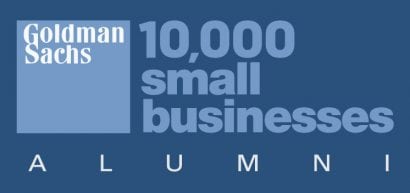
For those of us who have been developing web sites since the very first days, it has been an exciting ride of ever-evolving technologies, languages and expectations. I remember my palpable excitement way back in the late ’90’s when the first “designed” HTML sites came up and we all rushed in to see what we could do with tables, frames and other tricks. Next came MySQL and the interesting promise of data-driven sites, then .PHP and blogging began to rise. Now we are all about WordPress and its peers like Drupal, Joomla, and whatever is next.
I’m not a programmer – I can do some light programming and I grew up hacking around in Basic and its peers, but my abilities are limited to tweaking and cutting bits of code from one place to another. Throughout the development of the web I have tried to think as a designer and as a user – and I always have looked for places where I can get to the results I want as quickly and independently as possible. At Studio Two, we moved to WordPress starting about 6 years ago as our primary development platform because it hits that sweet spot between über-geeky and super-user-friendly that just works for us. I can build whole sites from scratch without having to harass Jason, our in-house programmer, or Christine, our super-talented web designer – but if we need to make something really look special or jump through hoops or solve a particular problem, the underlying technical fabric of WordPress’s PHP structure lets us do whatever we want.
With HTML5 coming on full-tilt now, we also have access to a whole new range of fun interactive actions that used to be reserved for flash. HTML5 has also infiltrated the developers who build commercially available themes for wordpress, and those themes are rethinking the basic platform in really exciting and creative ways.
Which leads me to the topic of this post – what I call “The Nimble Web”. My premise is this – we are now entering the 4th or 5th generation of web development and the users are coming along with us – and users ultimately are the reason we create sites. In this iteration, we find ourselves paying close attention to actual user behavior – by really looking closely at the analytics of the sites we build we can see what users are doing and interpret how their interaction should define our content and UX (user-interface) design. My premise is also about “speed to market” – that the new tools of web development allow us to act far more quickly (if we choose to) in creating and deploying sites. The Nimble Web is about creating sites today that provide users with the experience and information that they most want.
If you are reading this post there is a good chance that you are involved, at some level, in the question of “what should we do about our website” or “we need to build/rebuild our website, how should we go about it?”. I receive, on average, 1-2 RFP’s for web development every week. These RFP’s are often very thorough – well-intentioned documents created by committee to define a complex project and solicit accurate bids. What I see in the RFP’s is that they generally describe a website that we would have been building 3-4 years ago – a large, monolithic document with 100’s of pages of content, complex navigational structure, and very rigid design needs. These sites take 6-12 months to build, cost between $10k-$50k and consume significant resources in time and personnel during the development. They are anything but nimble, and they generally have been defined without any reference to actual user behavior.
I want to talk about an alternative. Here’s the story. We manage over 300 websites for a very wide variety of clients – retailers, restaurants, museums, theaters, designers, architects, real estate, and so on. For each of these sites we have access to their google analytics – the statistical report of user behavior on the sites – pages visited, time on site, demographic data, etc. Recently, as I was browsing through the analytics of a number of clients I noticed an interesting phenomenon – despite the diversity of the sites and their content, the same numbers kept popping up – visitors, on average, for EVERY site I looked at, visited between 3-4 pages and stayed for exactly 2:40. On EVERY site I looked at this was true. And if I dug down into the site content, visitors were spending that 2:40 looking for very specific, actionable information – directions, contact, event dates/times, and actionable events like buying tickets. They weren’t lingering or browsing around – they came looking, they found what they were looking for, and they left. I realized that for the majority of the sites we manage, visitors were treating them like convenience stores. You go to the 7-11 not to wander around aimlessly shopping – you go there specifically to buy a gallon of milk, a dozen eggs, and a Hershey bar. In and out in 2:40.
What does this mean? It means two things. One, if you are an organization considering developing a new web presence, consider carefully how much time and effort you want to put into using your site as more than a basic information and connection portal. Make sure that you study your current user analytics and consider the scope of investment you will be making in providing services that users don’t seem to be looking for or engaging in. Also, consider breaking your large project into a set of small sub-projects. We have been working with a number of organizations on this approach with great success. By breaking away from the premise that you can only have a single site for your organization you free up significant opportunity for creating richer and more dynamic experiences for discrete projects. An example of this is what we are doing with Hancock Shaker Village. During 2012 and 2013 so far we have rebuilt the core institutional website and concurrently developed a number of sub-sites for specific programs that had enough scope and content to suggest that a seperate site would be warranted. Thus today you can visit a sub-site for Baby Animals, The CSA Program, and others to come that are still being developed. In this diversity, the organization is finding that it is able to more quickly deploy program-specific content, is able to direct traffic directly to a more compelling experience, and that there are opportunities for creative expression that don’t threaten the function of aesthetic rigor of the main site.
The web can be a rich, engaging medium but it can also be a confusing, resource-consuming landscape. The Nimble Web would indicate that even large organizations can rethink their presence by taking a close look at the data created by user activity. If you would like to talk about how this might apply to your business or institution, let me know!


Join the discussion 2 Comments